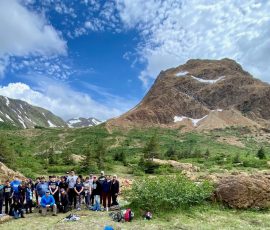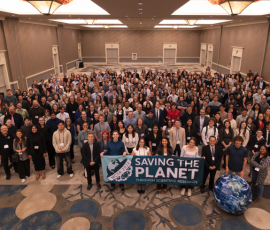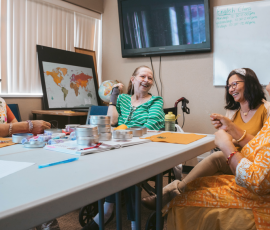Preparation is key to a successful grant request, and it’s also where many proposals fail. Projects can be creative, imaginative and deserving, but if there’s a lack of preparation, it can be frustrating for everyone. Make sure your organization is ready and can convey the essence of a project, its value and how it will be achieved before submitting your proposal.
Through the Murdock application, site visit, and review process we seek to identify the qualities that help organizations succeed in fulfilling their missions as well as their grant requests. The “talking points” below form the underpinnings of what questions are asked and what qualities are looked for in the process. Here are some of the questions and qualities.
Organizational Leadership
Questions on organizational leadership can help start the conversation with your board and leadership. But what are the questions to ask?
Talking Point – Organizational Leadership
Additional Resources:
Two Ted talks that speak to “leadership” in interesting and challenging ways:
- Links to Brené Brown speeches: “The Power of Vulnerability” and “Listening to Shame”
- Links to Simon Sinek speeches: “How Great Leaders Inspire Action” and “Why Good Leaders Make You Feel Safe”
Financial Management
Effective financial management is an important characteristic of a healthy nonprofit organization. There are several key elements and organizational characteristics, behaviors, and practices to consider regarding effective financial management.
Talking Point – Financial Management
Additional Resources:
- 10 Finance Essentials for Social Sector Funders
- 10 Finance Essentials for Social Sector Leaders
- Real Talk About Real Costs: Overhead; Laura Zumdahl, PhD., Vice President, Nonprofit Service, Donors Forum
Project Planning, Execution and Sustainability
Strategic planning and execution can be the key to success for any organization. We have included resources to help you understand your organizations strategic plan and the execution of that plan.
Talking Point – Project Planning Execution and Sustainability
Additional Resources:
- Business Model Generation, The Business Model Canvas. “The Business Model Canvas, is a strategic management and entrepreneurial tool. It allows you to describe, design, challenge, invent, and pivot your business model.”
- Kauffman Sketchbook. “In these short, animated ‘sketchbook’ videos, the Kauffman Foundation aims to demystify the phenomenon of entrepreneurship and bring to light messages about the important role entrepreneurs play in innovation, job creation, and economic growth. We encourage you to post or share these videos.”
Development and Fundraising
Every organization is challenged with continually working on development and fundraising. We are working on developing resources for nonprofits that assist in this regard.
Talking Point – Development and Fundraising
Additional Resources:
- Fundraising
- A helpful article in thinking and communication with donors is The Nonprofit Starvation Cycle. This 2009 article from Stanford Social Innovation Review, explains the “…cycle starts with funders’ unrealistic expectations about how much running a nonprofit costs, and results in nonprofits’ misrepresenting their costs while skimping on vital systems-acts that feed funders’ skewed beliefs.” This article touches on Funders’ Unrealistic Expectations, Underfed Overhead, Misleading Reporting, Proper Care and Feeding, and What Grantees Can Do.
Innovation
It is often stated that nonprofit organizations find themselves at an important time in history–a time that is characterized as volatile, uncertain, complex, and ambiguous, yet also full of opportunity. In the face of improbable societal changes, it is essential for boards and executive leaders to recognize that looking ahead and embracing challenges and opportunities are fundamental to mission stewardship. In this light, organizations should continually strive to improve current programs and organizational capacities, as well as create new and hopefully better ways to serve their constituencies. In other words, organizations should nurture a culture of innovation without ignoring the need for structure and discipline.
Additional Resources:
Assessment
It is quite common these days for organizations and foundations to seek to identify the ways by which they can “measure” the success of the grants they have provided. Best practice in both the not-for-profit and the philanthropic sectors calls for robust assessment and fruitful “investment” or stewardship of resources in seeking to fulfill the mission. What does success or impact look like for yours?







